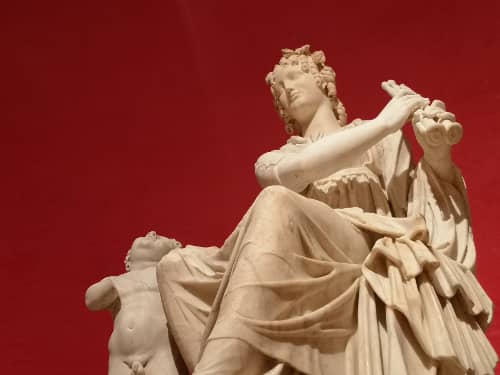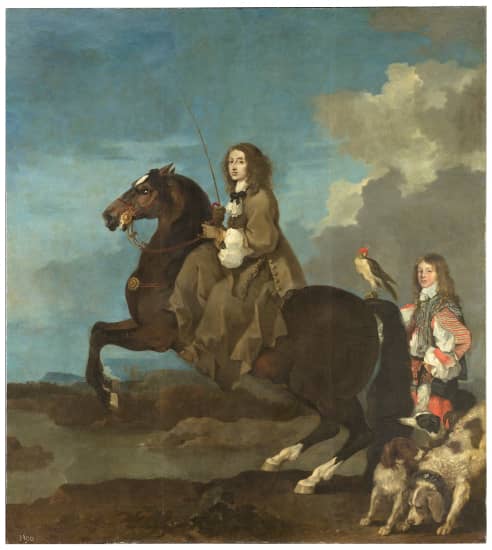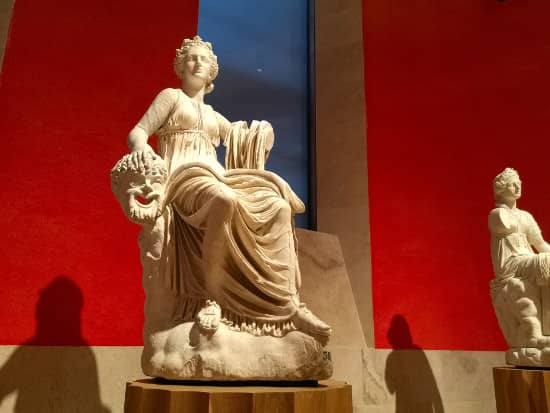
What’s behind the Prado Muses ?
Among the treasures on display in Madrid is a series of statues with a singular presentation, due to their eventful history in the region: the Prado Muses.
Placed in one of the rare big and round rooms, just below Velazquez’s impressive “Meninas”, they welcome visitors to the Prado Museum, in the only place suitable for resting and taking photos in the institution.
But why do these works have such a different status from other sculptures?
Calliope, Clio, Erato, Euterpe, Melpomène, Polymnia, Terpsichore, Thalia and Urania…In Greek mythology, the 9 Muses are evocative of the arts, as stated in classical education: respectively epic poetry, history, lyric poetry, music, tragedy, rhetoric, dance, comedy and astronomy.
Often associated with the figure of Apollo, god of the arts and the sun, they are frequently depicted on ancient vases, friezes, sculptures and even modern paintings, and can be recognized by their attributes.

But , we only see 8 Prado Muses. So what are they hiding from us? To understand, we need to go back to the history of these marble statues.
Found during excavations in the 15th century at Hadrian’s Villa in Tivoli, Italy, the 9 pieces were commissioned by the Emperor to surround his reception table in 130 a.c.. After more than a millennium behind the scenes, the whole set was sent to the palace of Pope Clement VII, and it was Queen Christina of Sweden, a great lover of art, who acquired 8 of them for her palace in Rome, thus making them known.
The sculptures were already famous by this time. Not only were these the only series of ancient works of this type to have been found, but at a time of great enthusiasm with Greco-Roman antiquity, they showed all the canons of classical allegory: the quality of the marble, the posture of the Muses, their accessories and their ideal beauty.

But when she had them restored by Francesco Maria Nocchieri, the Queen asked him to change one detail, and not the least: the face of one of them, Thalia, Muse of Comedy, to reflect her own features. It’s no coincidence: having just built Rome’s Tordinona theater, she’s willing to demonstrate her role as patron of classical comedy.
What’s more, in order to set the scene in her reception rooms, she had the 8 sculptures placed in a semicircle, and sat herself opposite the statue of Apollo, as the ninth, signifying her own interests and plans for the arts of her time.

But how did the sculptures end up in the Prado Museum?
On the death of Christina of Sweden, the first Bourbons of Spain, Philip V and Elisabeth Farnese, acquired the ensemble, as the king had an ambitious architectural project in mind: the “Palacio de la Granja de San Ildefonso”, near Segovia, today known as “the little Versailles”. The Sculptures room, which you can still visit today, presents a copy of the Muses surrounding Apollo.

The original works are in the Prado Museum, which, during an exhibition dedicated to Queen Christina of Sweden in 1997, took the opportunity to offer to restore and conserve them. The institution gives them a singular place: welcoming visitors as they enter the museum, in a room with red walls, accompanying the paintings of Philip II of the Habsburgs and Philip V of the Bourbons, great collectors of arts, and responsible for many of the museum’s acquisitions. The attributes of each Muse will enable you to find them easily: like Thalia, Muse of Comedy, wearing her theatrical mask, or Urania, dedicated to astronomy, with her globe and starry crown, or even Euterpe, representing music, with her flute.
To find out more about the wonders to be found in and around Madrid’s institutions, join our free tour Madrid and discover the secrets of the city.